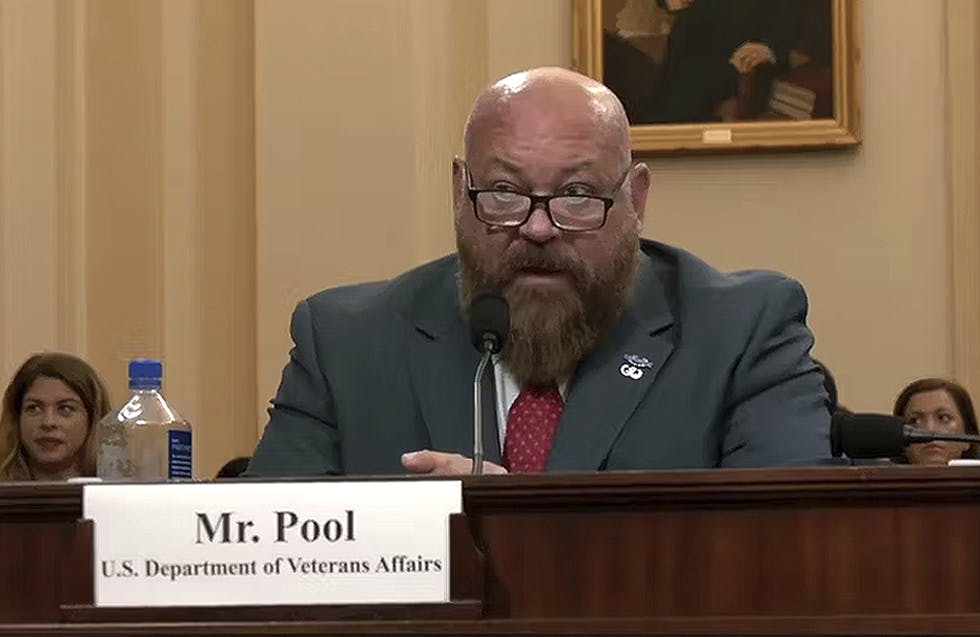DOD: Cyber Workforce is Our Generation Space Race
CIO John Sherman highlighted a new upcoming cybersecurity workforce strategy to help its tech talent problem.

As the demand for cybersecurity professionals continues to overcome supply, federal agencies are introducing new programs to help shorten that labor gap.
At the Defense Department, this will entail a new strategy that CIO John Sherman introduced during the Billington Cybersecurity Summit in Washington, D.C., Thursday.
“We have a cybersecurity workforce strategy coming out probably within the next 60 days,” Sherman said. “We need a dedicated workforce strategy … looking not only at cyber, but broader STEM efforts, and what we’re doing across the enterprise era. So, we have a strategy specifically on this as we look to diversify the workforce … this really is our generation space race.”
As DOD continues to accelerate its workforce development, DOD Principal Director of Resources and Analysis Mark Gorak said that the agency is focusing on two key components: attraction and training. In addition to incentivizing the younger generation to join the federal workforce, Gorak said that there must be continuous training to prepare cybersecurity experts for the evolving threat landscape.
DOD will be targeting education programs for middle school and below to increase awareness of cybersecurity job opportunities. The agency is also looking to expand entry-level positions, tiered positions and internships.
“The desire is out there. We have to come together as a community to be able to inspire these children to want to serve in this kind of capacity,” Gorak said.
DOD has also established the Cyber Workforce Framework, which is a standardized workforce framework that DOD cybersecurity uses to categorize the full spectrum of cyber workforce roles. Gorak noted that DOD will expand the program across the agency and use the framework to guide pay and retention efforts.
The government’s cybersecurity advisory agency CISA is also working on efforts to introduce the cybersecurity field early on among the nation’s youths. This entails partnering with organizations like cyber.org to create free K-12 curricula for schools, said CISA Chief of Staff Kiersten Todt. CISA is focused on accessibility and diversity in its outreach strategy.
“We have not truly created diversity of thinking, skills, aptitudes and expertise the way that we need to in this space. This space is all about innovation, and innovation is about thinking about problems differently,” Todt said.
CISA has faced challenges with resources as it continues to expand its workforce incentives and programs, which has made it difficult for the agency to remain competitive with industry. CISA is focusing on building out an integrated agency and investing in culture change to create an “organization that retains individuals because they’re invested in the mission.”
“What we do have in federal government is the mission. … What we don’t have are really the resources,” Todt said. “It is this continuum in this ecosystem, all of which needs the support and really the surge capacity of innovative thinking in order to execute to build out this workforce more effectively.”
This is a carousel with manually rotating slides. Use Next and Previous buttons to navigate or jump to a slide with the slide dots
-

VA CIO Targets Modern IT and Smarter Workforce Alignment
Agency leaders told lawmakers they are focused on trimming legacy systems and restructuring its workforce to streamline operations.
3m read -

Pentagon's $200M AI Contracts Signal Broader Effort to Transform Talent
The Army is leveraging Silicon Valley, reservist programs and new hiring strategies to integrate critical digital skills in its ranks.
5m read -

Inside DOD’s Push to Grow the Cyber Workforce Through Academia
Diba Hadi gives her first interview since becoming principal director of the DOD’s Cyber Academic Engagement Office.
15m listen -

Generative AI Demands Federal Workforce Readiness, Officials Say
NASA and DOI outline new generative AI use cases and stress that successful AI adoption depends on strong change management.
6m read -

The Next AI Wave Requires Stronger Cyber Defenses, Data Management
IT officials warn of new vulnerabilities posed by AI as agencies continue to leverage the tech to boost operational efficiency.
5m read -

Federal CIOs Push for ROI-Focused Modernization to Advance Mission Goals
CIOs focus on return on investment, data governance and application modernization to drive mission outcomes as agencies adopt new tech tools.
4m read -

Data Transparency Essential to Government Reform, Rep. Sessions Says
Co-Chair of the Congressional DOGE Caucus Rep. Pete Sessions calls for data sharing and partnerships to reduce waste and improve efficiency.
5m read -

DOD Turns to Skills-Based Hiring to Build Next-Gen Cyber Workforce
Mark Gorak discusses DOD’s efforts to build a diverse cyber workforce, including skills-based hiring and partnerships with over 480 schools.
20m listen -

Trump Executive Order Boosts HBCUs Role in Building Federal Tech Workforce
The executive order empowers HBCUs to develop tech talent pipelines and expand access to federal workforce opportunities.
3m read -

DOD Can No Longer Assume Superiority in Digital Warfare, Officials Warn
The DOD must make concerted efforts to address cyber vulnerabilities to maintain the tactical edge, military leaders said at HammerCon 2025.
4m read -

Tracking CIOs in Trump's Second Term
Stay informed on the latest shifts in federal technology leadership as new CIOs are appointed and President Trump's second term takes shape.
6m read -

Inside Oak Ridge National Lab’s Pioneer Approach to AI
Energy Department’s Oak Ridge National Lab transforms AI vulnerabilities into strategic opportunities for national defense.
22m listen
















